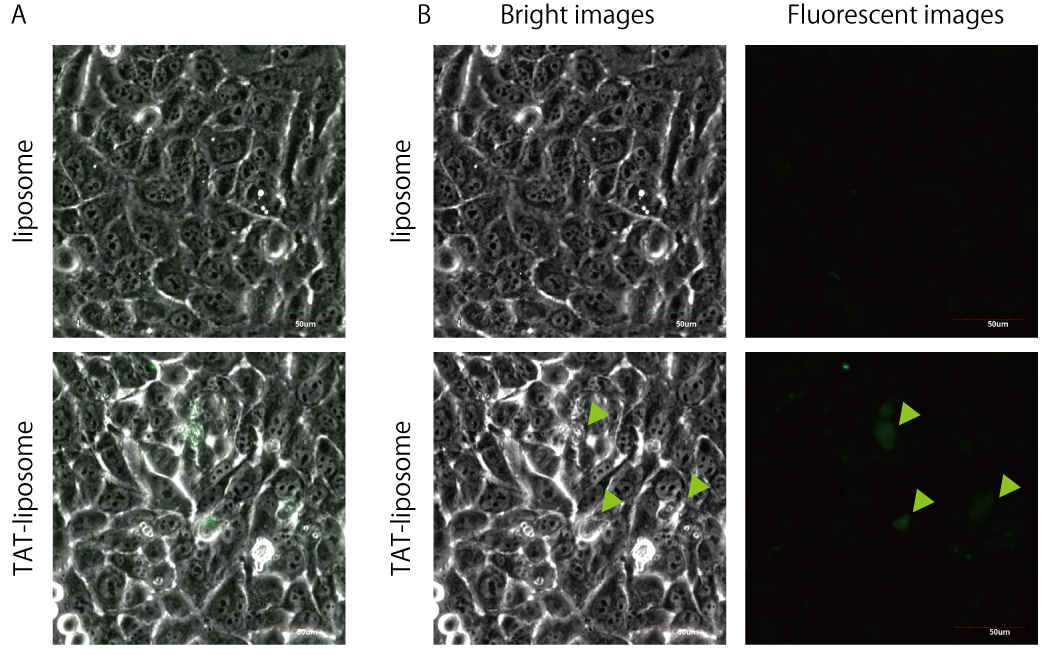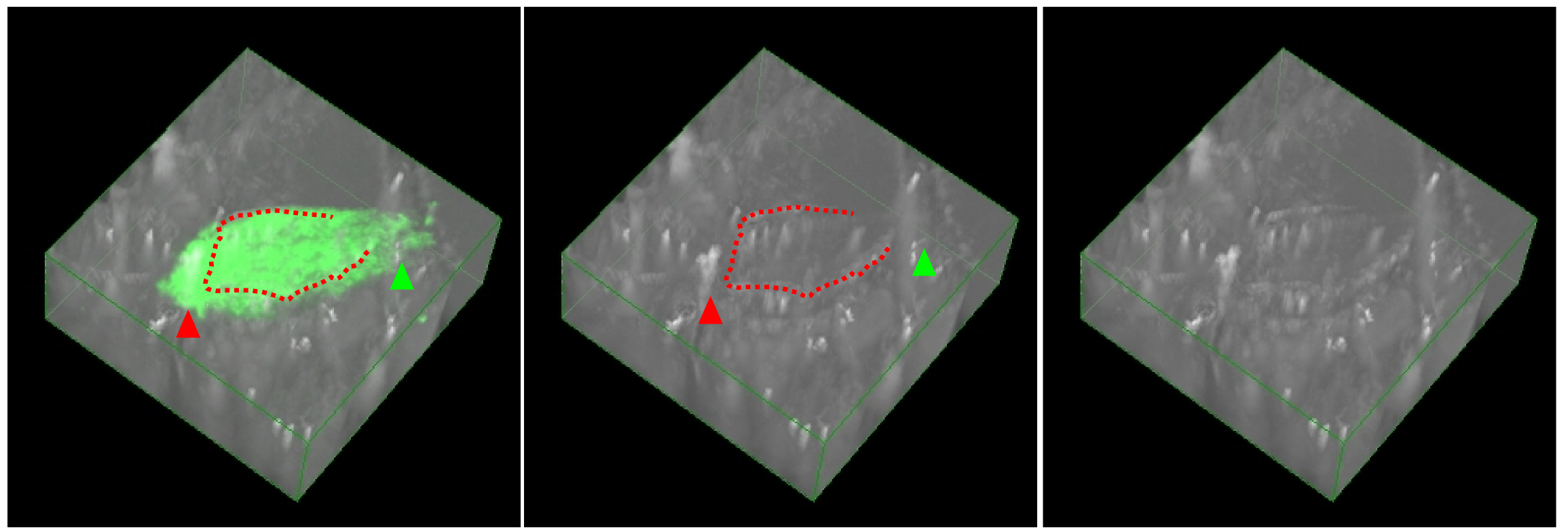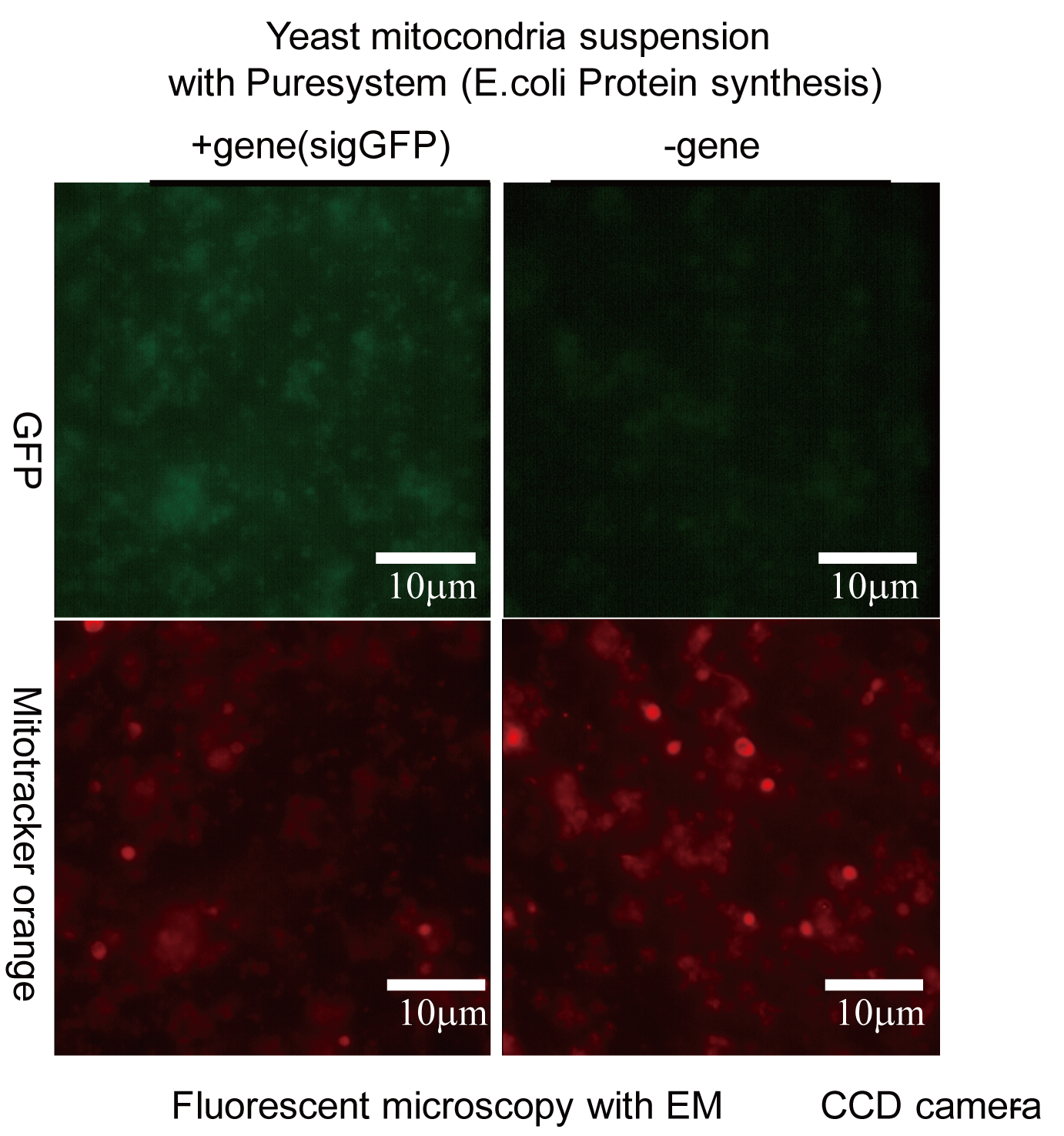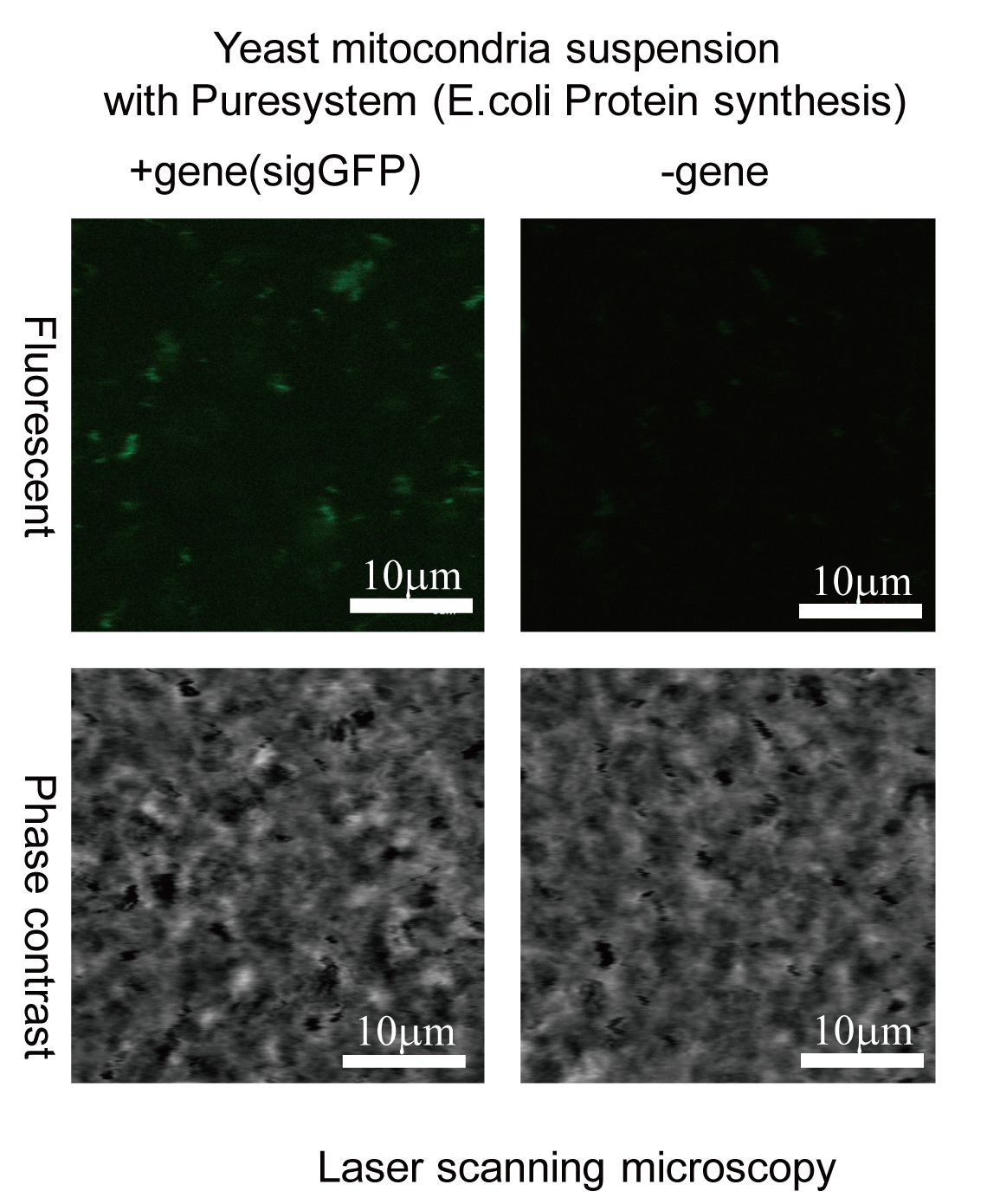Team:Kyoto/CiC/Results
From 2009.igem.org
(→Result of Subgoal B) |
|||
| Line 98: | Line 98: | ||
| + | ======Discussion (subgoal B)====== | ||
| + | |||
| + | |||
| + | ・We did not succeed in reconstituting TIM23 Complexes after releasing them from the membranes. | ||
| + | →We need to further study and analyze the complex with biochemical methods. | ||
| + | |||
| + | ・The experiment carried out in order to confirm the function of the signal sequence (which is recognized by TIM23) was not designed well enough for a precise discussion. That is, we cannot evacuate the possibility that the GFP part of sig-GFP is the cause of the protein’s getting into HeLa cells. | ||
| + | →We can improve the experiment protocol by adding another sample as a negative control--- mitochondria incubated with normal GFP protein(= without signal sequence). | ||
===Result of Subgoal C=== | ===Result of Subgoal C=== | ||
Revision as of 02:59, 22 October 2009
- Home
- Cells in Cells
- Results & Discussion
Results & Discussion
Products length check
HIV-TAT::(LALAAAA)3 expressing vector (BBa_K210009)
Signal for TIM23 complex::GFP expressing vector (BBa_K210010)
Signal for TIM23 complex::EGFP expressing vector for HeLa cells
Parts sequence
We sequenced features and parts which we constructed. The results matched the sequences we expected. If you are interested in detailed data, click here.
Result of Subgoal A
Confirmation of the functions of TAT-liposome
To confirm the function of the constructed TAT-anchor peptide, we prepared the liposome containing NBD-PE with or without TAT-anchor which was synthesized or translated in vitro. The size of a liposome without TAT was too small to distinguish individual particle, while liposomes with TAT formed some large coalesced liposomes (Fig. 1-(A)). The coalesced liposomes might be caused by the aggregation between TAT peptides or electric screening effect of TAT against liposome. We, any way, added the prepared liposomes into the medium of cells. Since the cells incubated with liposome did not emit any fluorescent signal, no liposome was uptaken by cells nonspecifically. In contrast, the TAT-liposome adhered on some cells (Fig. 1-(B), arrowheads). We, thus, observed the cells by a confocal microscope to reveal whether the liposomes were uptaken or not. The sliced image of the cell indicates that the liposome was at least taken partially since fluorescent signal was within the outline of the cross-section of the cell (Described in Fig. 2 as red dashed-line). However, the fluorescent signal was also detected in the outside of the cellular outline around the green or red arrowhead shown in Fig. 2. The fluorescence pointed by the red arrowhead is probably a coalesced liposome which could not be uptaken by cell because of its too large size. The fluorescent signals around the green arrowhead may be within the cell because the outline of the cell around the arrowhead is difficult to determine. Consequently, we believe that our constructed TAT-liposome at least has the function of the transduction of its host protein into cells. However, the efficiency was very low and the shape of the liposome inside or outside the cells did not seem to be sphere. We must improve the preparation protocol of liposomes and optimize the ratio of lipid molecule to TAT peptide for farther research.
Discussion
The results of the experiments to approach subgoal A at least suggested that lipid barrier with (HIV-1 TAT)-(LALAAAA)3 protein is able to get into HeLa cells.
But later we noticed three problems in the design of these experiments.
First, we observed much less cells which took in the liposomes than we had expected. We are now making additional trials, changing the ratio of lipid molecule to TAT peptide to find the point where liposomes go into the cells most efficiently.
Second, we have not assured that the cells with liposomes in these pictures are alive. In our "Cells in Cells" project, it is essential that a host cell remain alive after liposomes' entry into it because prepared liposomes are designed to take in mitochondrial proteins the host cell synthesize. For future works, we are planning to collect liposome-introduced cells with FACS and examine their viability. It could be measured by, for instance, staining the cells with Trypan Blue. (Living cells remain unstained.)
Third, and the last, we have not told whether a liposome introduced into a cell remains intact. Liposomes may fuse with cell membranes or be torn apart while being introduced. We will prepare a liposome in which fluorescent dye is contained. If such a liposome collapses while penetrating through the cell membrane, the dye will diffuse in the cell or medium. Also we are constructing larger liposomes to check it by observing them penetrating through the cell membrane.
Result of Subgoal B
Discussion (subgoal B)
・We did not succeed in reconstituting TIM23 Complexes after releasing them from the membranes. →We need to further study and analyze the complex with biochemical methods.
・The experiment carried out in order to confirm the function of the signal sequence (which is recognized by TIM23) was not designed well enough for a precise discussion. That is, we cannot evacuate the possibility that the GFP part of sig-GFP is the cause of the protein’s getting into HeLa cells. →We can improve the experiment protocol by adding another sample as a negative control--- mitochondria incubated with normal GFP protein(= without signal sequence).
Result of Subgoal C
sig-GFP expression in HeLa
To confirm the function of the signal sequence for importing protein into mitochondria, we compared the expressioin pattern of sig-GFP or GFP with mitotracker signal. The GFP signal was detected throughout the cell except for the black granules in the cytoplasm or the nuclear, while sig-GFP signal showed the string-like pattern in the cytoplasm. The black granules in the cytoplasm observed in the GFP-expressing cell were stained by mitotracker, and the result indicated that the GFP was normally eliminated from mitochondria (Fig. 3, GFP and mitotracker merged). In case of sig-GFP, mitochondria stained by a mitotracker and the GFP signal showed almost the same pattern. the yellow color in the merge images (Fig. 3, sig-GFP and mitotracker merged) suggested that the sig-GFP and mitochondria were colocalized in the HeLa cell. Consequently, our constructed signal sequence has the function of importing protein into mitochondria as expected.
 "
"




